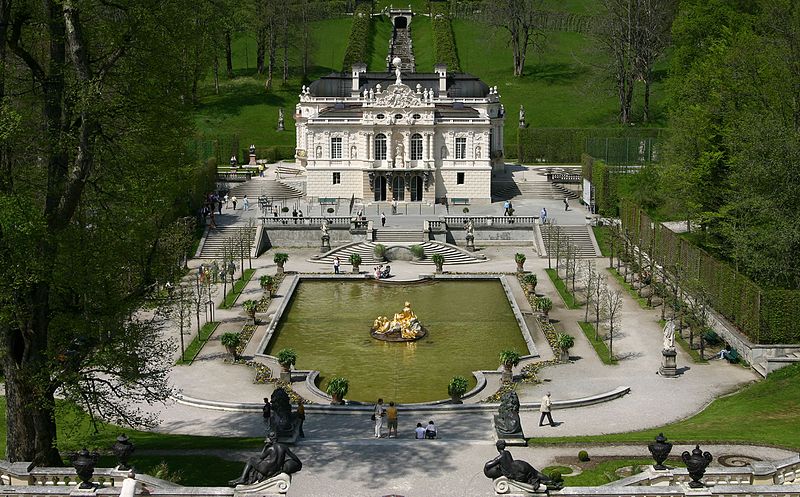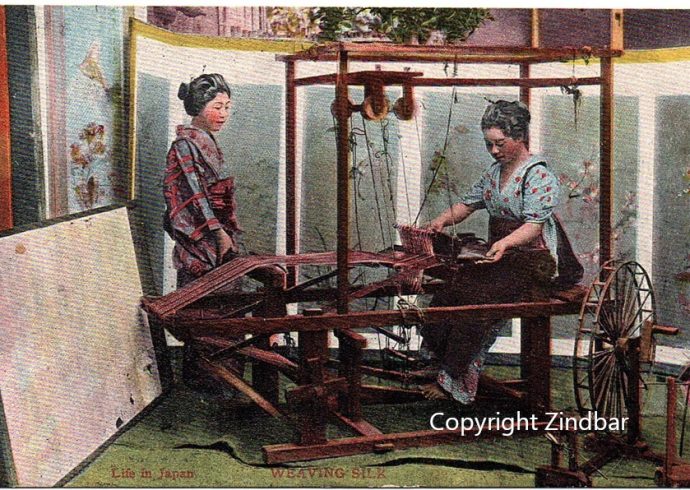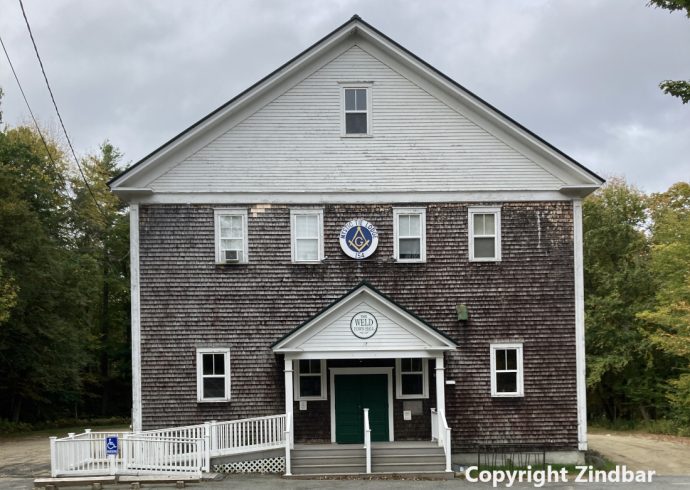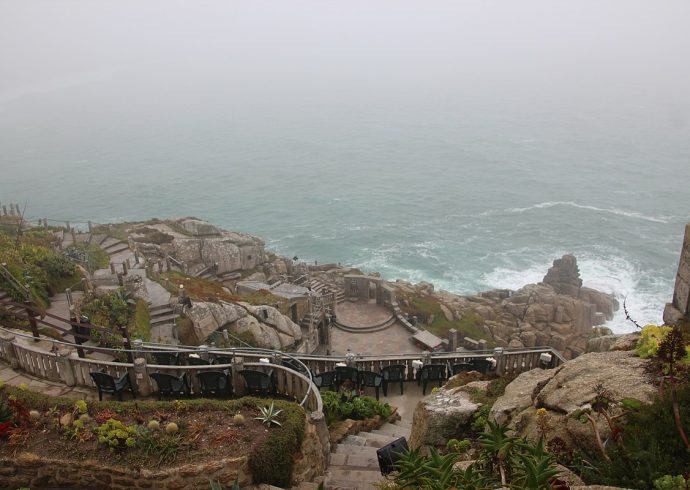
Linderhof Palace was renovated by King Ludwig II of Bavaria and completed in 1886. Prior to his expansion of the building’s design, it stood as part of his father’s property known as Konigshauschen. Ludwig had portions of the new additions built in wood and them covered in stone. This small palace was intended to be a private retreat from the world just for Ludwig, and he spared no expense in making this palace his home in the grandeur that can be found at Louis XIV’s palace at Versailles. Much of the interior decoration at Linderhof bore the same rich coloring and gild as the Versailles palace did but on a much smaller scale. In front of the palace, Ludwig designed gardens that were executed in royal fashion, complete with a large pool, a fountain, and gilded sculpture in the center of the pool.
Flower beds forming a parterre, terrace, and cascade gardens are arranged through the palace’s yard. One of the most notable buildings outside of the palace on the same property is a Moorish kiosk which came from the Zbirow Palace in Bohemia. An elaborate peacock throne room decorated in turquoise, pink, and blue colors give the viewer the feeling that he or she is standing in a royal palace in the Middle East and not in Europe. The garden also has a grotto that stands on a hill behind the palace. Ludwig created this with his favorite composer Wagner in mind, installing sculptures that sit in the pool inside of the grotto.
Inside the Linderhof Palace is the vestibule, staircase, western and eastern tapestry chambers, yellow cabinet, audience chamber, lilac cabinet, bedroom, pink cabinet, dining room, blue cabinet, and mirror room. It was in the mirror room where Ludwig liked to spend the hours of the night. This room has not only mirrors to increase the amount of light from the candles but also heavily gilded walls and furniture to transform it into a “sun” room. Sculptures of Apollo, the Greek god of the sun adorn marble tables in this room.
The lilac, pink, blue, and yellow cabinets are so named for the dominant colors on the walls and furniture. These rooms have beautiful paintings on the ceilings and walls with more gilded decorations forming partitions on the walls. An artist by the name Albert Grafle painted many of the portraits of European royalty that hang on the walls of the palace. The bedroom was enlarged by Ludwig, with the bed being sectioned off by a small railing covered in gilt, with a large painting above the bed on the ceiling and a chandelier in the center of the room’s ceiling. The dining room is unusual in that the main table is quite small, big enough for only one person: Ludwig himself. Since he did not do any formal entertaining at this palace, he could afford to make dining very intimate and cozy. Gilded stucco decorations of Grecian figures from mythology sit on the oval border at the base of the ceiling where the ceiling and the wall meet.
The palace is open to tourists and also has a gift shop and restaurant.
Image Credit: Softeis, CC BY-SA 3.0, via Wikimedia Commons.


